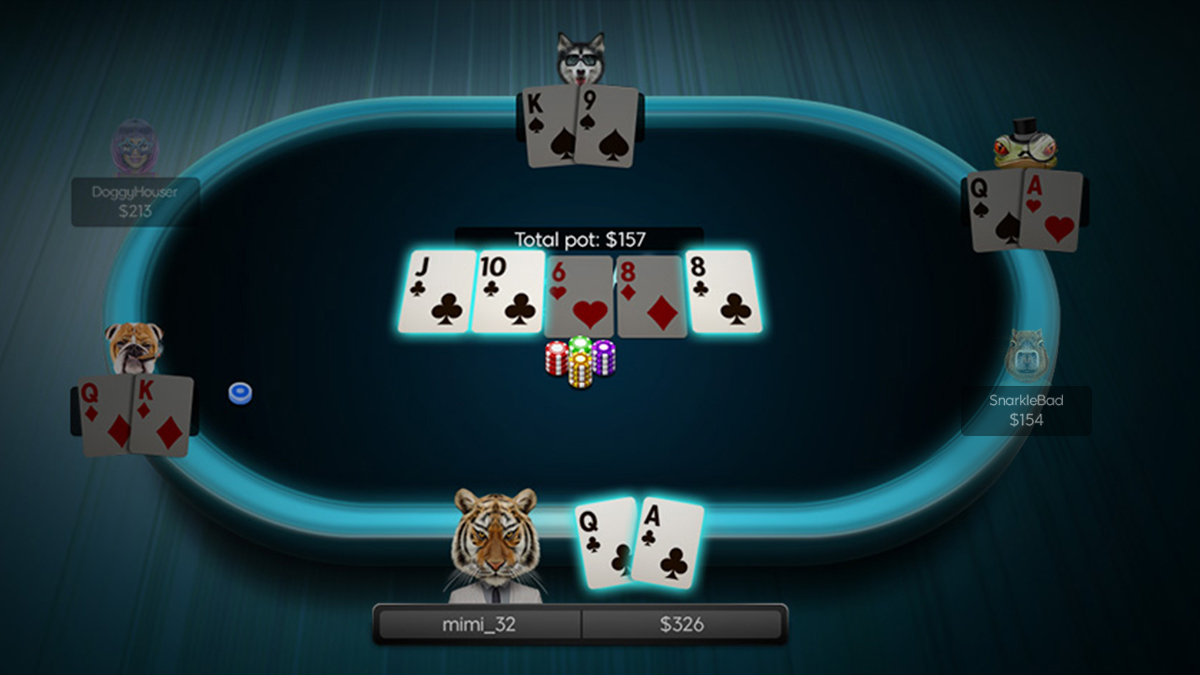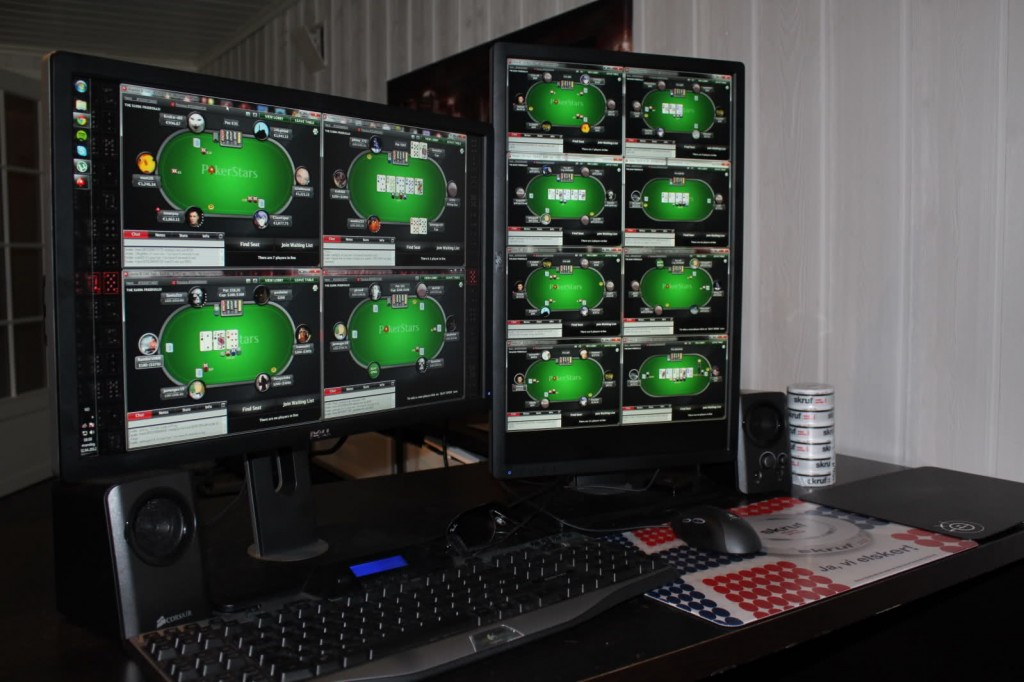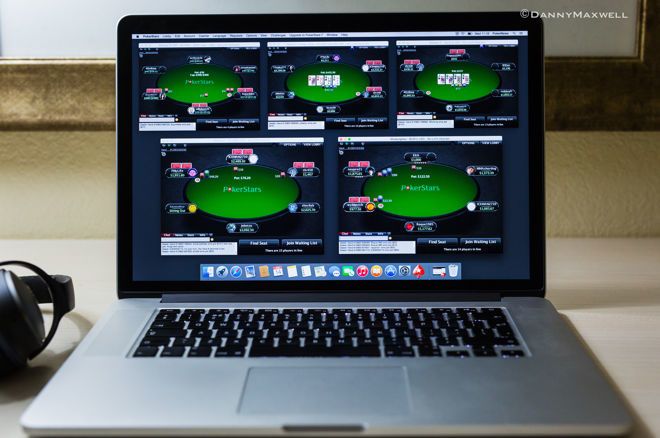In online poker, multi-tabling is one of the most effective ways to boost your overall win rate. While your earnings aren't going to multiply in direct correlation with how many tables you are playing, you should be able to notice a marked improvement.
Learning how to multi table can be difficult. With every table that you add, you decrease the amount of time that you get to focus on any one individual situation. You’ll have to get better at reading situations and making decisions quickly, otherwise you’ll time out repeatedly, missing out on +EV spots.
This obviously isn’t the goal — making more money is. So what I’m going to do to help you is walk you through a beginner’s guide to multi-tabling in poker. Don’t worry though, there are some tips for advanced players too.
A massive mistake when adding tables is to add too many at one time. All you’ll end up doing is overwhelming yourself.
Think of adding tables like weight lifting. If you bench 150lbs and are looking to add more weight, you don’t go and add 50lbs to the bar. That’d be stupid. It’s likely that you won’t be able to get the weight up in the first place and if you do, you’ll be lucky if you don’t hurt yourself.
Instead, what you do is add the weight gradually, 5 or 10lbs at a time. It’ll still be a challenge to get the bar in the air, but you’ll likely be able to, and without hurting yourself.
You should take the same approach when adding tables to your session. If you currently play 6 tables, then add 1 or 2. Do this until you hit your max number of tables, either hourly or comfort level — or both.
Should You Stack or Tile Your Tables?
I’ve had students ask me whether they should stack or tile their tables. My answer? It’s up to you. I’ll share my experience though, and hopefully that will help you to make your decision.
When I first started to play online, I only played 4-6 tables at once. And I tiled them. I tiled my tables because I liked to see everything that was going on.
Little did I realize, trying to watch all of these tables at once was actually distracting me. It wasn’t possible for me to keep track of the action on all of my tables. My coach recommended that I try stacking my tables and I did — it made a night and day difference for me. I only saw 2 tables at once, which helped me to focus more. I also found that I had more time to think about spots and make better decisions. And there was no worries about missing my turn, as I had an auto hotkey program, which I’ll discuss in abit.
Find a Balance

I know a lot of players that try to play as many tables as they possibly can. They want to earn as much as they can per hour. While I understand this thinking, what I think many of these players fail to see is that more isn’t always better. It’s important to find a balance.
One thing to find a balance between is how many tables you play and your hourly rate. In other words, why would you play 40 tables at $.75 per game on average, if you can play 25 tables at $1.50 a game (assuming an hour per game)? It doesn’t make sense. You earn almost $7 more per hour more by playing fewer tables.

But do you know what the right balance for you is? It’s actually more time consuming than it is difficult. The best way to do it is to play as many tables as possible for a decent sample, like 1,000 or 2,000 games. Then play fewer tables (maybe half) for the same amount of games. Then figure out where you’re making the most money. From there you’ll start adding or removing tables until you find where you’re making the most money per game.
Another balance to find is the point where you stop playing poker and start going through the motions — playing robotically.
The problem with playing robotically is that you’re not making the best decisions, but are making ‘OK’ decisions. The difference is minimal if you look at it from the short term. But in the long run, making slightly better decisions due to playing poker vs. playing robotically will add up over time. A good example of this is shoving AK in a SNG verses playing a flop. For better players, it makes more sense to play a pot since we’ll have an edge. This means a higher ROI and less variance. However, the more tables you play, the more you’ll be shoving AK instead of playing a pot.
Invest in Tools
Certain poker tools are going to be helpful when multi-tabling. I suggest having two — a poker HUD and some sort of auto hotkey software.
A poker HUD will help you to keep track of the players at your table and what they do. Do they open a lot or are they tight? Maybe they 3-bet a lot and hardly ever steal blind verses blind. It’ll be difficult to know if you don’t use this software. But if you do, you can make decisions on the fly based on the stats given, which is especially helpful if you haven’t paid attention to a particular table. There are two programs that I recommend; Hold’em Manager and Poker Tracker.
The second program you should invest in is auto hotkey (AHK) software. What this will allow you to do is set each button on your keyboard or your mouse with an action, such as raise, shove, fold, call, bet, etc. This is much faster than trying to move your mouse and click buttons, and always having to enter a bet amount. The program I used is called Table Ninja, which will run you $50. There are free options too, such as AutoHotkey. Either way, just be sure to get one of these programs as it’ll make a night and day difference for most players when multi-tabling.
Many online poker players are playing 6, 10 or even more tables at the same time. This means they are playing more hands each hour, and can make a lot of money by winning just a few dollars each hour over many games. The problem with multi-tabling is that it splits your attention, meaning you’ll often miss profitable opportunities against individual players. This article shows you how to build up the number of games you are comfortable playing – and what the major options are for your screen layout.
First up you should have a think about your motivations for multi-tabling. While this is a great way of increasing your profits, it is difficult to learn the game while keeping an eye on so many games. You’ll need to schedule learning time away from the games, or just accept that poker is a cash-machine and stop moving up the levels for a while!
You should also be aware that your site needs to have a good volume of games running and smooth-running software. Without these your multi-tabling will be severely constrained.
The guide below starts with a look at how increasing the number of tables decreases your profit from each game while still improving your hourly rate. Next the main display options of tiled or cascaded are looked at. After this advice on adding tables in manageable steps and information on some poker tools which are designed to help you multi-table.
How Adding More Games Affects Your Profit
I will use a simplified example to show how adding tables affects your overall returns. The starting point is 2 tables, which – on average – make you $5 each per hour for a total hourly rate of $10.
You decide to add 2 more and find your attention split enough that you miss the odd profitable semi-bluffing spot and miss a bet size tell or two from your opponents. No big deal, you still manage $4 per table for a total of $16 per hour.
All goes well and you decide to go for 8 games, learning to cope with the massive amount of information by folding a few of your more speculative starting hands and folding early in unclear spots which would require detailed reads. Your per-table rate is now almost halved to $2.75c per table per hour. The extra games keep your hourly rate going up to $22 per hour.
4 more tables get added, and you lose some more opportunities to make moves or act on player specific information. Now you fold all but the strongest starting hands from the first few positions and play cautiously after the flop. Your rate per game goes down to $2, but the 12 games give you an hourly rate of $24.
Online Poker Multi Table Strategy
You can add on a lot more bonus money to these hourly rates, which can make a significant impact on your returns at the end of each month. The key point here is that returns are diminishing as you add more games – but your hourly rate goes up.
Learning To Play Multiple Tables – Tiled Or Cascaded Games
There are two main schools of thought when it comes to multi-tabling. One group like to see as many of the games at once as possible, and achieve this by minimizing the games and having them all visible in a matrix setup on the screen. The other school feels that this is too much information at once and prefer to lay the tables on top of each other. They pop-up when it is your turn to act and if anything interesting happens they can be pulled from the stack so you can watch them.
Which you choose depends completely on your personal preference. I recommend you try both for a while and see which suits you best. My preference is for tiled – I find you can spot betting size tells easier this way.
Get Comfortable Before You Move Up
Online Poker Multi Table Tournament Strategy
Before you heroically attempt 12 games, stop and consider how dangerous missing information or tilting can be when you are overwhelmed. I strongly advise you to build up slowly, adding just one table at a time and then making sure that you are comfortable before adding another one. This may seem like a slow process, but it could save the very poker bankroll you are trying to grow.

There are tools which help with multi-tabling by collecting statistics on your opponent’s play and displaying them next to each player’s avatar. These numbers can effectively replace your own observations and are great for spotting players at the extremes of loose, tight, aggressive and passive. Popular versions of this ‘Heads-up-Display’ software include Poker Tracker and Holdem Manager.